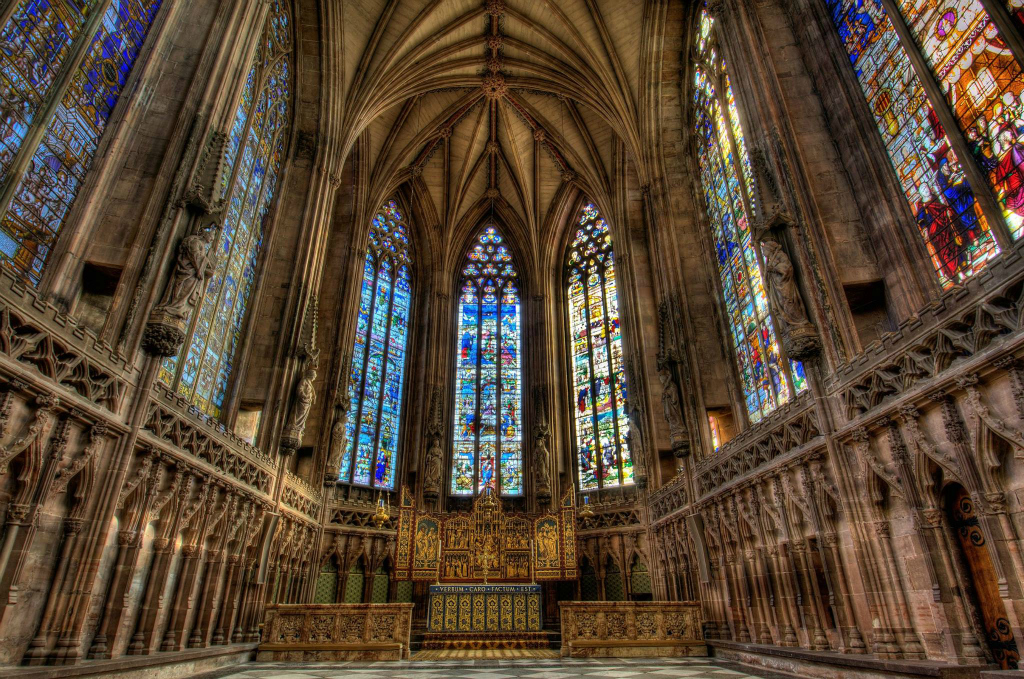Does the future of art installations lie in historic buildings? Georgie Burgess investigates.
Lichfield cathedral is getting a space age makeover this summer by resident artist, Peter Walker. Marking the 50th anniversary of the 1969 moon landing, Walker plans to turn the cathedral’s floor into the surface of the moon. The project is called ‘One Small Step’ and by using sound and light Walker says visitors will be able stand on the lunar landscape and look back at the earth, projected onto the cathedral’s ceiling. Walker says: “When you look up at the moon, it is untouchable, but we want to bring the moon to the public and invite them to take their own small step across it. We just want to encourage people to explore possibilities, to reach for the moon and be in that space, and to reflect on what that means for them and for all mankind.” The Cathedral plans to hold events all through the year, with Walker’s installation being just one part of the anniversary celebrations.
Walker’s stellar idea seems to be gaining popularity as more and more historic buildings are taking over as the new alternative to art galleries. Lichfield is not the only example, with Canterbury cathedral having just commemorated the 100th anniversary of the First World War with an installation of 100 glass jars suspended from its ceiling in the shape of a naval ship. Shrewsbury’s historic flax mill, Maltings, marked the end of its restoration in 2018 with a shadowy installation telling the stories of past workers. It’s even happening here in Leeds! Light Night Leeds, the annual art and light festival that takes place in October, uses projections to turn the city in to one big gallery space.
But why is this trend taking off? When you think about it, cathedrals and churches are the perfect sites for art installations. They offer so much space to be creative: high arched ceilings, gothic facades and alcoves make the perfect canvas. An artist has the opportunity to create so much more drama and emotion than if they were faced with a regular white cube gallery. Artists like Peter Walker can work with the building, incorporating features to create something truly unique that you couldn’t replicate anywhere else. In short, the building becomes part of the artwork and lends itself to a more immersive experience, encouraging people to really think about the art. There really is no alternative to standing in a space where you can feel and see the history come to life.
These are also mutually beneficial projects; while the artist gets to showcase their work in a fantastic space, the revenue created by the tourism can go straight towards helping the building itself and securing its longevity. Walker’s previous installation, ‘Before Action’ which was a commemoration for the anniversary of the Somme, brought approximately 3,000 visitors to the Cathedral, many of whom may not have thought to visit before. By bringing the art out in to the community instead of in galleries which people can find intimidating, we are hopefully taking steps forward in making art and exhibitions more accessible and inclusive.
Combining the historic with the artistic just makes sense, as they overlap in so many ways already. Britain has no shortage of great historical sites and with technological advancements being made all the time I wonder if soon we might be seeing stars on Stonehenge or Buckingham Palace.
Georgie Burgess
Image Courtesy of Lichfield Cathedral Photographers/Will Fuller Photography/Paul Horton

